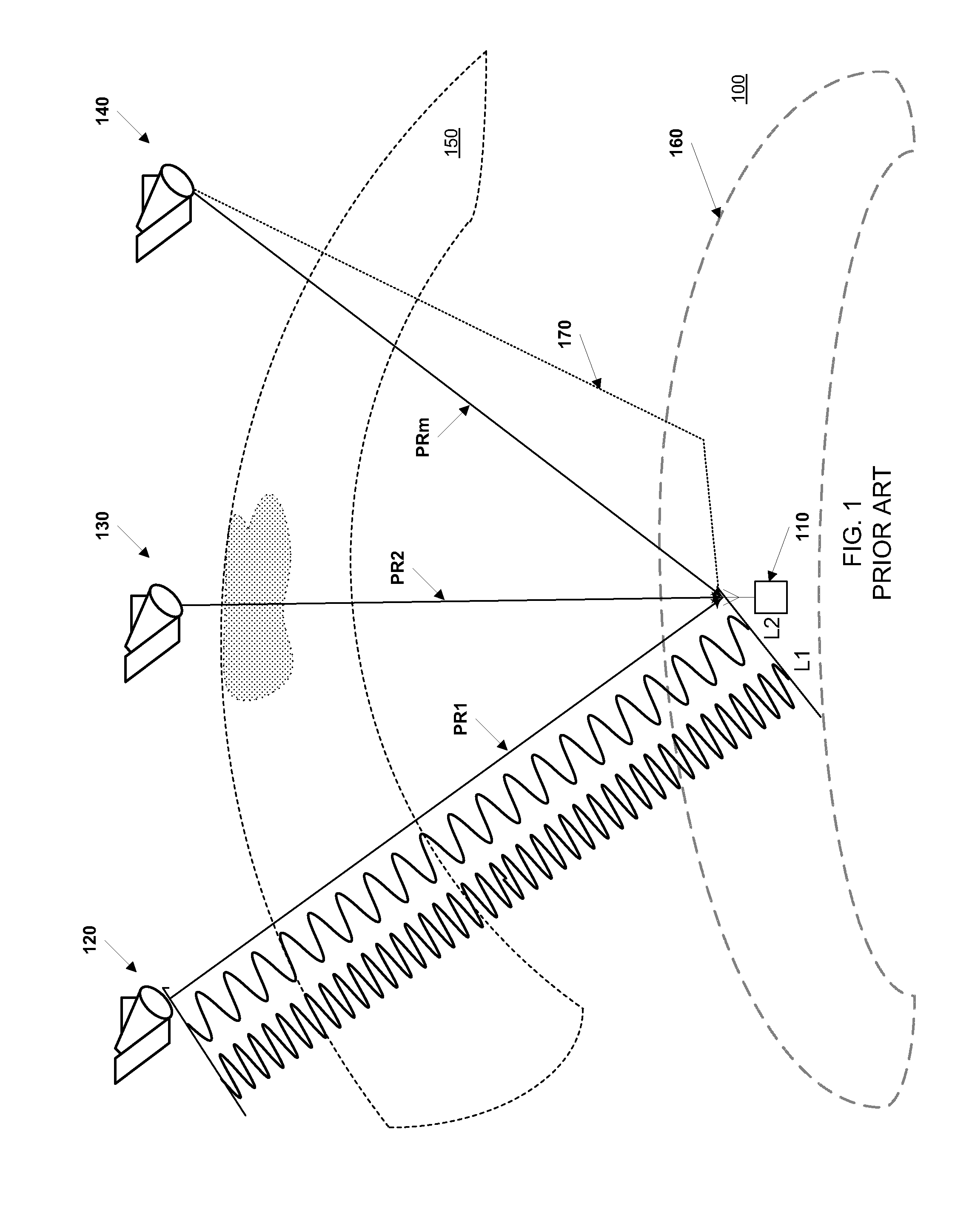GNSS atmospheric estimation with federated ionospheric filter
a technology of federated ionospheric filter and atmospheric estimation, applied in the field of global navigation satellite system gnss, can solve the problem of less useful for numerical weather prediction (nwp), and achieve the effect of accelerating the convergence of
- Summary
- Abstract
- Description
- Claims
- Application Information
AI Technical Summary
Benefits of technology
Problems solved by technology
Method used
Image
Examples
Embodiment Construction
Part 1: Introduction
[0049]FIG. 1 schematically illustrates a prior-art GNSS scenario 100. Receiver 110 receives GNSS signals from any number m of satellites in view, such as at 120, 130 and 140. The signals pass through the earth's ionosphere 150 and through the earth's troposphere 160. Each signal has multiple carrier frequencies, such as frequencies L1 and L2. Receiver 110 determines from the signals respective pseudo-ranges, PR1, PR2, . . . , PRM, to the satellites. Pseudo-range determinations are distorted by signal-path variations resulting from passage of the signals through the ionosphere 150 and the troposphere 160, and from multipath effects, as indicated schematically at 170. Pseudo-ranges can be determined using the C / A code with an error of about one meter. However, the phases of the L1 and L2 carriers can be measured with an accuracy of 0.01-0.05 cycles (corresponding to pseudo-range errors of 2 mm to 1 cm). Phase measurements of the carriers are influenced by the dispe...
PUM
 Login to View More
Login to View More Abstract
Description
Claims
Application Information
 Login to View More
Login to View More - R&D
- Intellectual Property
- Life Sciences
- Materials
- Tech Scout
- Unparalleled Data Quality
- Higher Quality Content
- 60% Fewer Hallucinations
Browse by: Latest US Patents, China's latest patents, Technical Efficacy Thesaurus, Application Domain, Technology Topic, Popular Technical Reports.
© 2025 PatSnap. All rights reserved.Legal|Privacy policy|Modern Slavery Act Transparency Statement|Sitemap|About US| Contact US: help@patsnap.com



